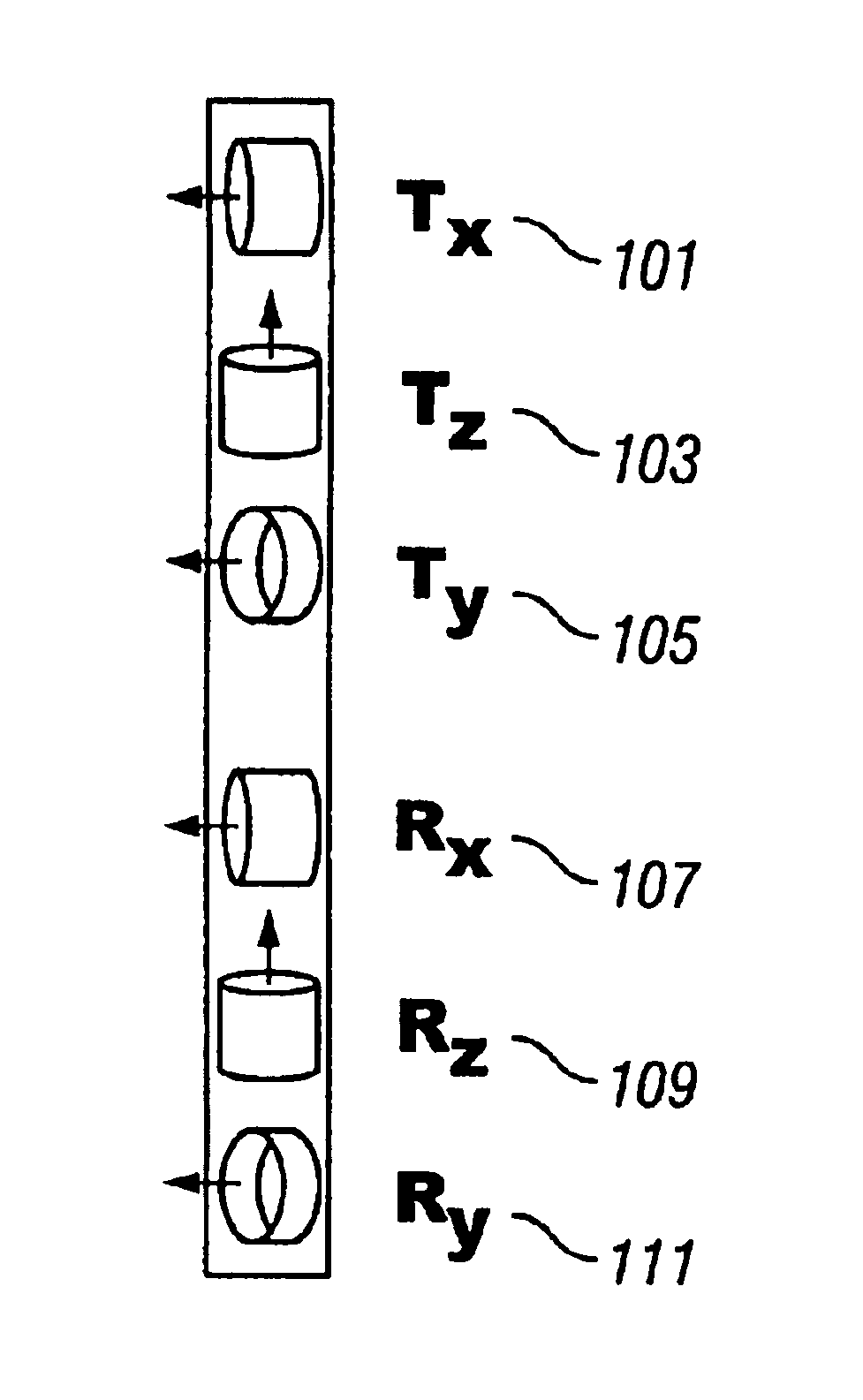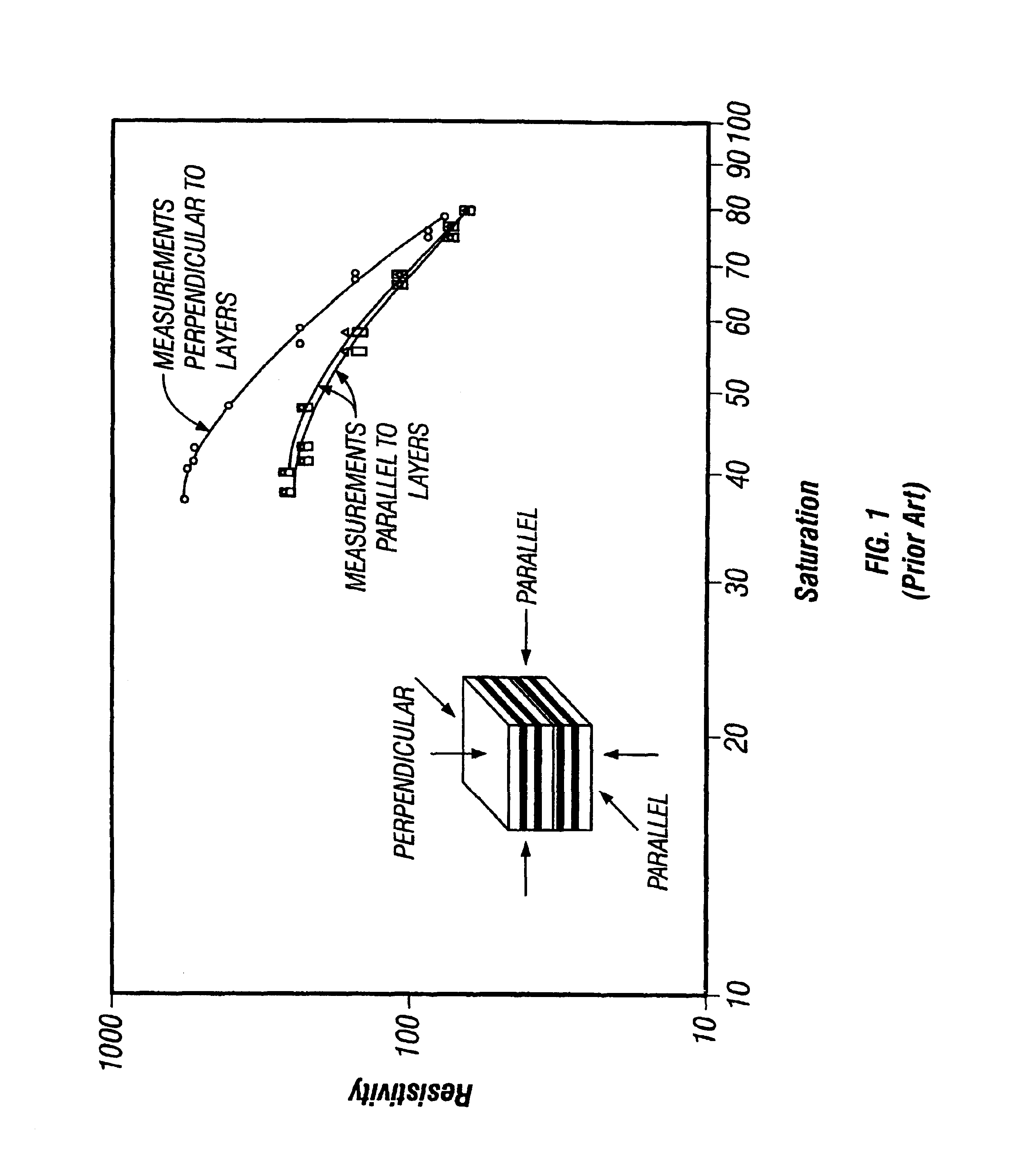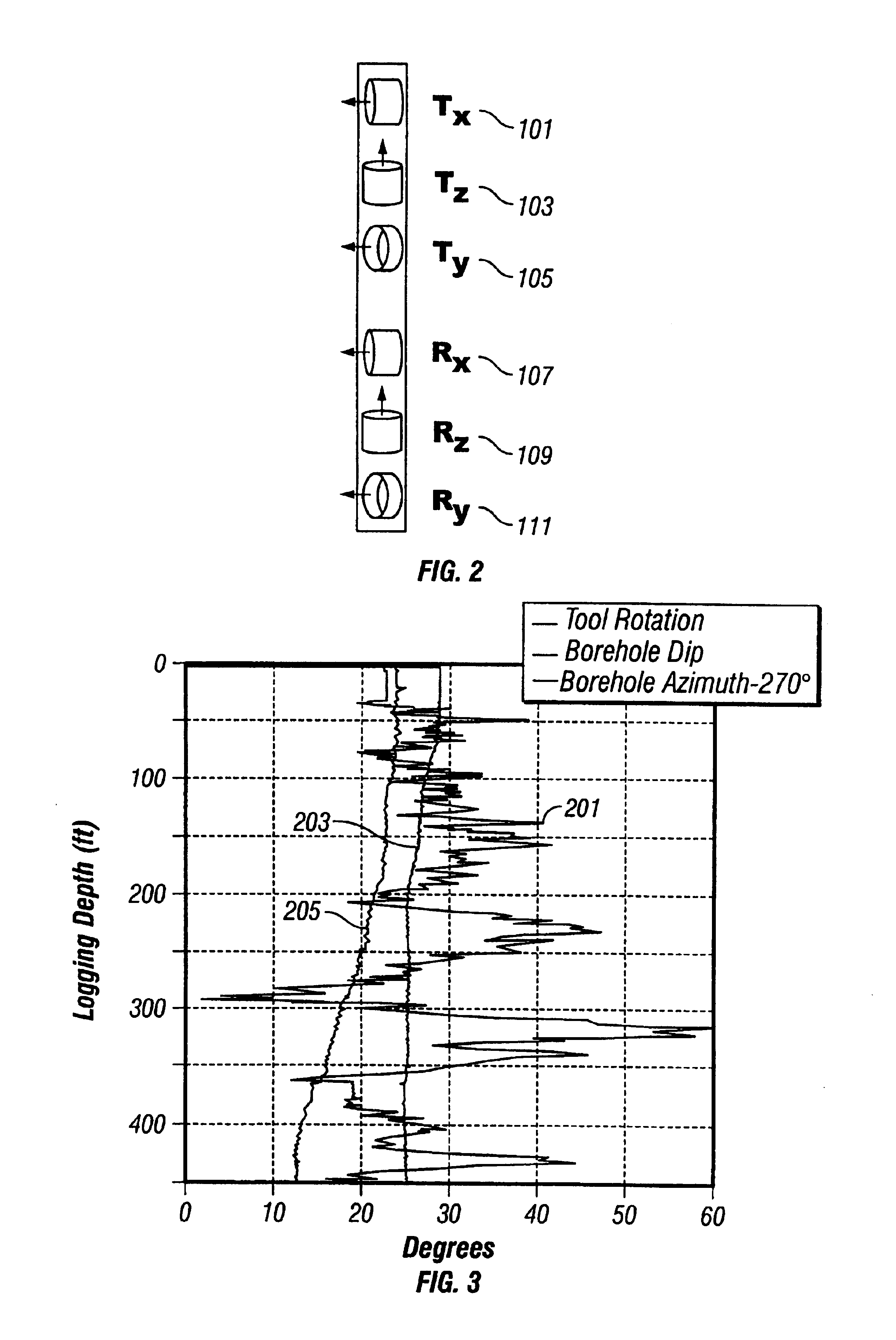Method of using electrical and acoustic anisotropy measurements for fracture identification
a technology of electrical and acoustic anisotropy and fracture identification, which is applied in the field of interpretation of measurements made, can solve the problems of inability to distinguish between anisotropy caused by stress and anisotropy caused by fracture, and difficulty in correlated surface seismic measurements of azimuthal anisotropy with specific reservoir intervals
- Summary
- Abstract
- Description
- Claims
- Application Information
AI Technical Summary
Problems solved by technology
Method used
Image
Examples
Embodiment Construction
[0037]In the method of the present invention, a cross-dipole logging tool is used to determine the propagation velocities of shear waves generated by transmitters with two different (preferably orthogonal) polarizations and recorded by at least two receivers with preferably orthogonal orientation. By using prior art methods such as that described by Tang, the principal directions of azimuthal anisotropy for shear waves is determined along with the two shear velocities. As noted in the background of the invention, there is no guarantee that the borehole axis would be normal to the bedding plane. However, those versed in the art would recognize that for deviations from normality of up to 10°, the effects of dip would be small and the prior art rotation method would give reasonably good estimates of the principal directions of azimuthal anisotropy.
[0038]Referring to FIG. 2, the configuration of transmitter and receiver coils in a preferred embodiment of the 3DEX induction logging instr...
PUM
 Login to View More
Login to View More Abstract
Description
Claims
Application Information
 Login to View More
Login to View More - R&D
- Intellectual Property
- Life Sciences
- Materials
- Tech Scout
- Unparalleled Data Quality
- Higher Quality Content
- 60% Fewer Hallucinations
Browse by: Latest US Patents, China's latest patents, Technical Efficacy Thesaurus, Application Domain, Technology Topic, Popular Technical Reports.
© 2025 PatSnap. All rights reserved.Legal|Privacy policy|Modern Slavery Act Transparency Statement|Sitemap|About US| Contact US: help@patsnap.com



